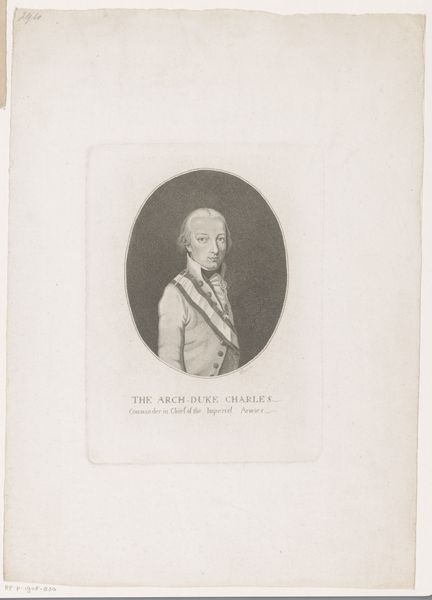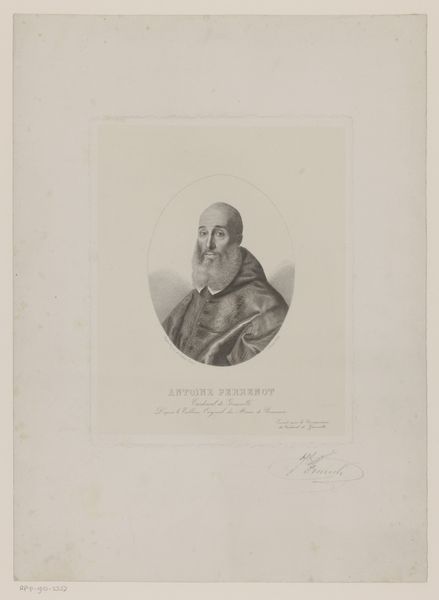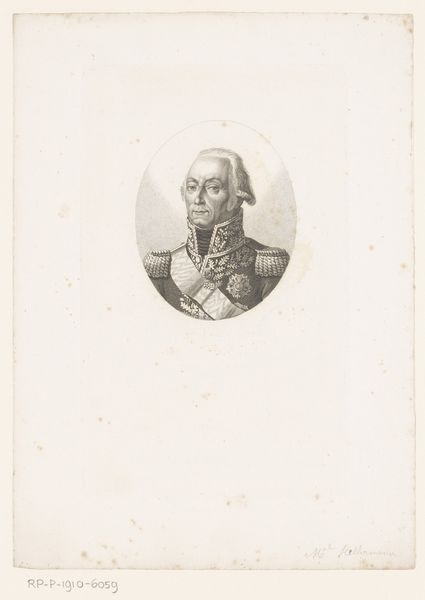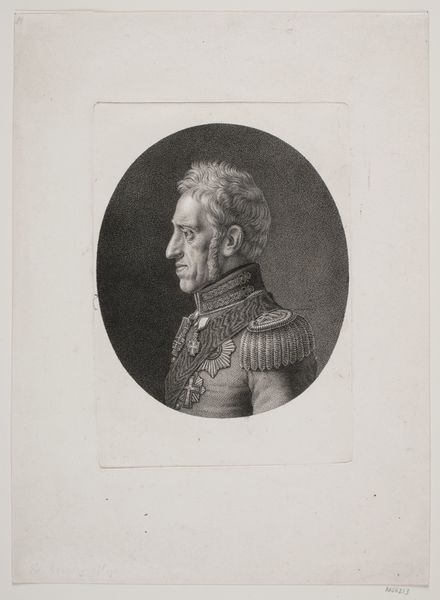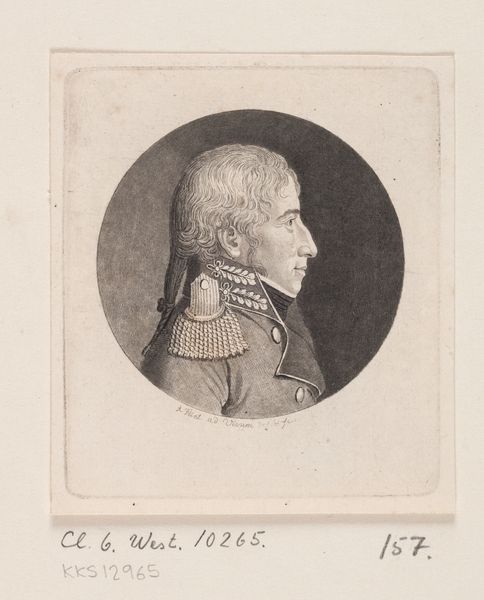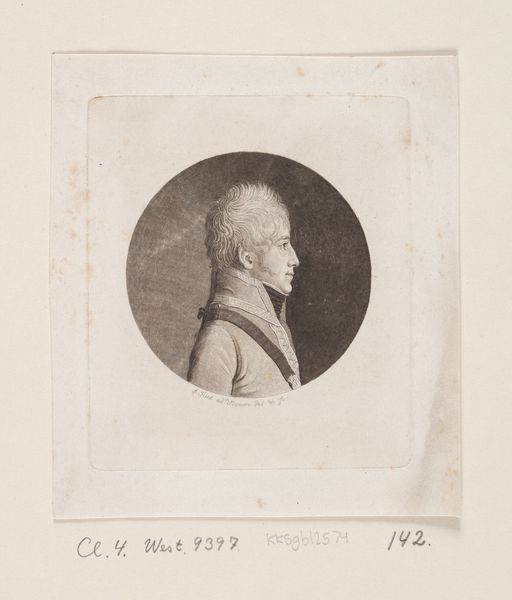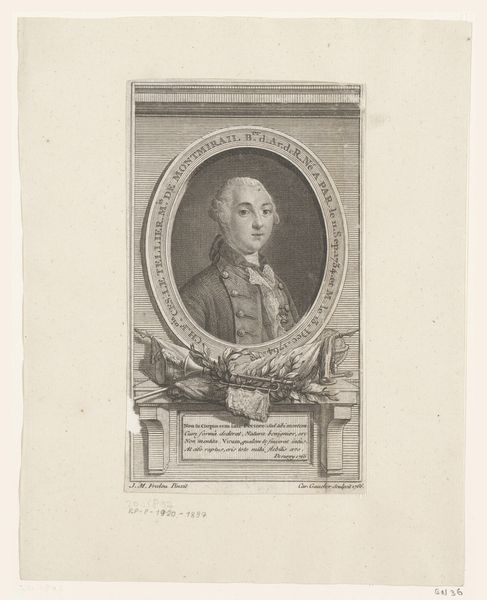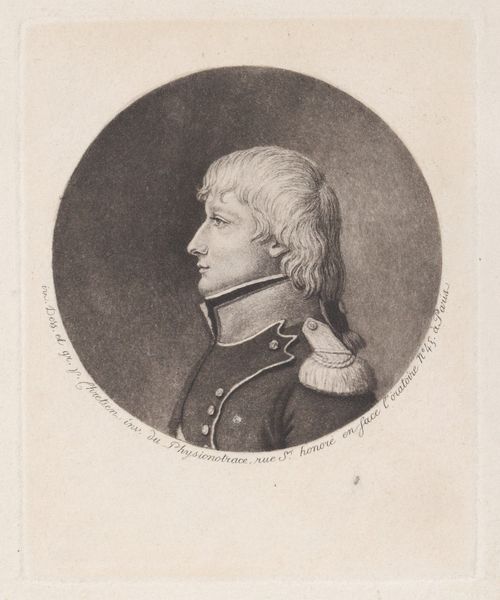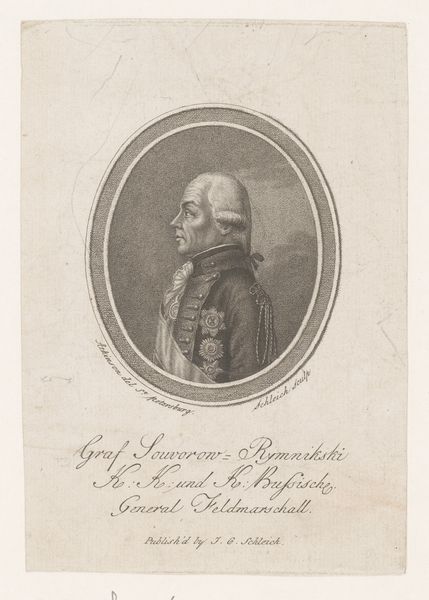
drawing, print, pencil
#
portrait
#
pencil drawn
#
drawing
#
neoclacissism
# print
#
pencil drawing
#
pencil
#
academic-art
Dimensions: 60 mm (None) (billedmaal), 83 mm (height) x 72 mm (width) (bladmaal)
Curator: This print presents Frederik Adeler, created sometime between 1767 and 1824. What strikes you first about it? Editor: The man’s profile! Stern, determined... and definitely accustomed to giving orders. There’s a sense of… clinical precision in the way the light falls across his face. Is this Adeler somebody important? Curator: Indeed. The work exemplifies neoclassical portraiture, reflecting the aristocratic sensibilities of the time. Consider Adeler's gaze, the severe neoclassical composition, and his highly decorated military uniform, suggesting power and authority. It's fascinating how the style reflects social values of the period. Editor: The trappings of status, carefully rendered to impress. But is there also, perhaps, a kind of visual rhetoric here? The artist subtly encoding specific ideologies in the image of power and legacy. Think of what his gaze represents… or does it attempt to mask? Curator: A loaded question. However, the cultural significance of the portrait lies, as always, both in its artistic features and what these visuals symbolized within the societal frameworks of the day. Every aspect, from Adeler's meticulously depicted uniform to his very posture, resonates with deeper historical and symbolic weight. The meticulous details, I believe, hint at an individual meticulously aware of the importance of appearances. Editor: Absolutely, there’s intention at work! The circle enclosing him feels almost like a lens focusing power and projecting an idea of a capable ruler out to a waiting audience. This portrait serves less as a record and more like an endorsement—or even the *making*—of Adeler as an archetype. I appreciate how academic the portrayal feels. Curator: Looking closer, this is Andreas Flint's craft—meticulously drawing using pencil on paper. These physical details are interesting given what we've explored about symbolism. Editor: Reflecting on this piece, one wonders about the function of portraiture in establishing and perpetuating power dynamics in earlier societies. Curator: I agree. It is also so interesting how portraiture persists as a vital element of art history, and how such powerful impressions of identity translate throughout changing cultural settings.
Comments
No comments
Be the first to comment and join the conversation on the ultimate creative platform.

